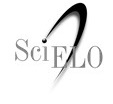Morpho-anatomy of Celtis ehrenbergiana (Celtidaceae) leaves developed under natural light and shadow conditions
DOI:
https://doi.org/10.30972/bon.2221245Keywords:
Celtis ehrenbergiana, foliar epidermis, mesophyll, midrib, stomatal densityAbstract
The aim of this paper was to establish characteristics of Celtis ehrenbergiana(Klotzsch) Liebm. (Celtidaceae) leaves developed under natural sun and shaded conditions. For the study were collected mature leaves. They were taken from the branches located in the middle of the tree crown, and inside branches between the fifth to seventh leaves from the apex of the branch. In the shade leaf, the leaf-limb is thin, herbaceous and light green. The shade leaf structure is bifacial, epidermis with wavy-sinuous anticlinal cell walls, mesophyll formed by palisade and spongy parenchyma, and angular-lacunar collenchyma. The sun leaf type has a thick leaf-limb, leathery and dark green. The sun leaf structure is equifacial, epidermis with straight anticlinal cell walls, mesophyll formed by homogeneous palisade parenchyma, and angular-massive collenchyma. There is nothing to scarcely stomata on adaxial surface in shade type leaf, however they are numerous in the sun type leaf.Celtis ehrenbergiana exhibited phenotypic plasticity. This means it has advantages over other species less adaptable and might be survive to climate changesDownloads
Download data is not yet available.
Downloads
Published
2013-07-01
How to Cite
Nughes, L., Colares, M., Hernández, M., & Arambarri, A. (2013). Morpho-anatomy of Celtis ehrenbergiana (Celtidaceae) leaves developed under natural light and shadow conditions. Bonplandia, 22(2), 159–170. https://doi.org/10.30972/bon.2221245
Issue
Section
Original papers
License
Declaration of Adhesion to Open Access
- All contents of Bonplandia journal are available online, open to all and for free, before they are printed.
Copyright Notice
- Bonplandia magazine allows authors to retain their copyright without restrictions.
- The journal is under a Creative Commons Attribution 4.0 International license.















.jpg)


